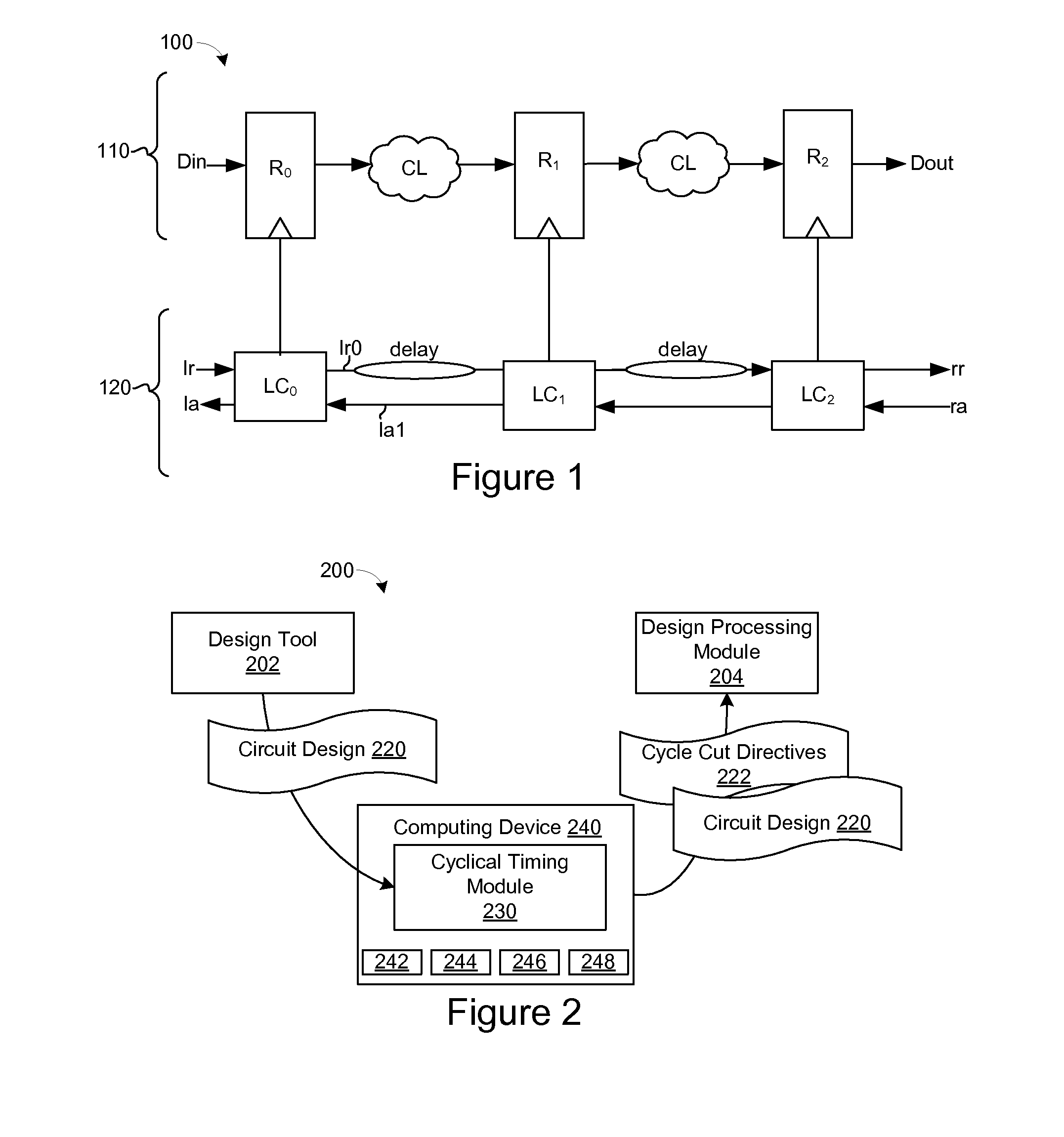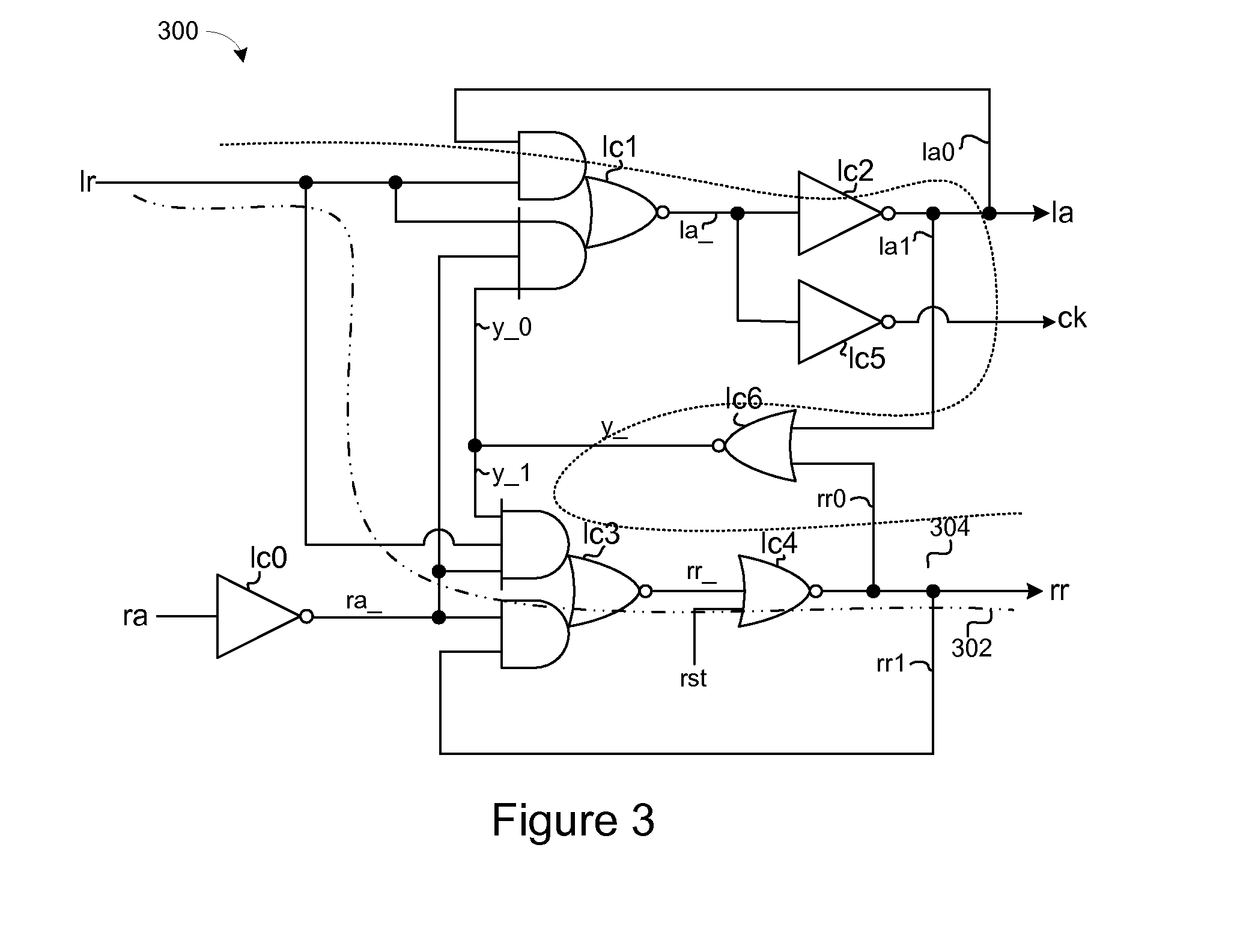Cycle cutting with timing path analysis
a timing path and cycle cutting technology, applied in the direction of cad circuit design, program control, instruments, etc., can solve the problem of not being able to perform certain processing functions on cyclic circuit design, and achieve the effect of correct processing
- Summary
- Abstract
- Description
- Claims
- Application Information
AI Technical Summary
Benefits of technology
Problems solved by technology
Method used
Image
Examples
Embodiment Construction
[0015]As described above, cyclical circuit designs may form the basis of high-performance, low-power systems. However, cyclical circuit designs cannot be correctly processed through conventional tool flows without first cutting the timing cycles therein. As used herein, the terms “cycle cuts” or “cycle cut directives” refer to a set of constraints that cut circuit timing paths in a circuit design, such that the circuit design can be represented as a DAG and can be correctly processed in a CAD tool flow.
[0016]In some embodiments, the timing cycles of a cyclical circuit design are cut such that the functionality of the design is preserved. The cuts are configured to preserve critical timing paths and / or may be selected to prevent “orphaning” circuit elements. The cycle cuts allow the design to be correctly processed using a CAD tool flow to perform operations, such as power optimizations, element sizing, static timing analysis (STA), layout and routing, and so on. An “orphaned element...
PUM
 Login to View More
Login to View More Abstract
Description
Claims
Application Information
 Login to View More
Login to View More - R&D
- Intellectual Property
- Life Sciences
- Materials
- Tech Scout
- Unparalleled Data Quality
- Higher Quality Content
- 60% Fewer Hallucinations
Browse by: Latest US Patents, China's latest patents, Technical Efficacy Thesaurus, Application Domain, Technology Topic, Popular Technical Reports.
© 2025 PatSnap. All rights reserved.Legal|Privacy policy|Modern Slavery Act Transparency Statement|Sitemap|About US| Contact US: help@patsnap.com



